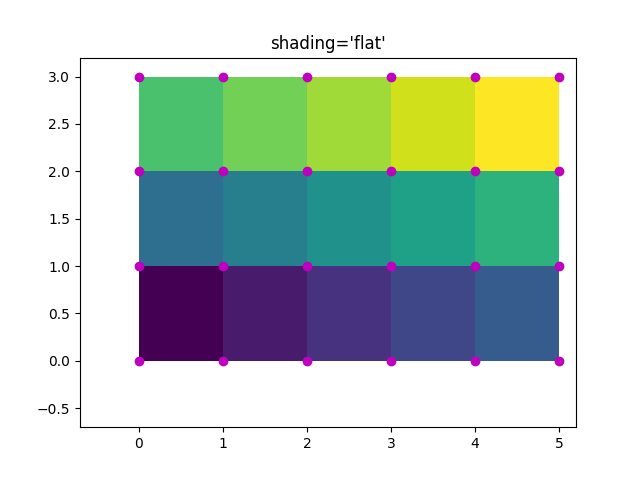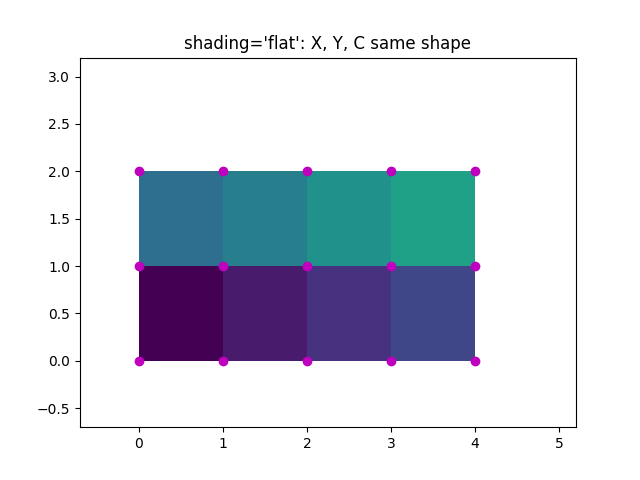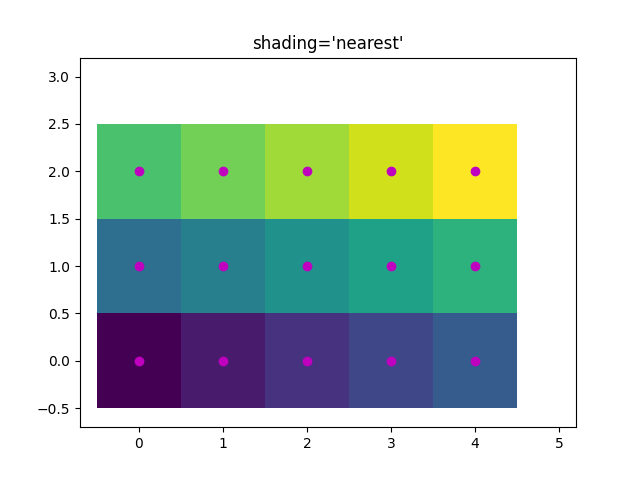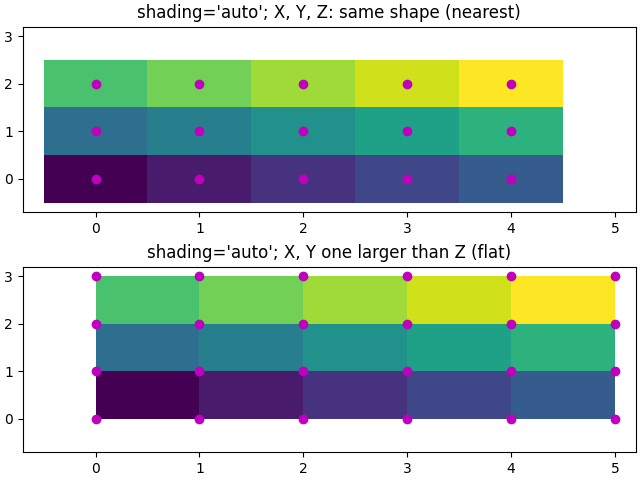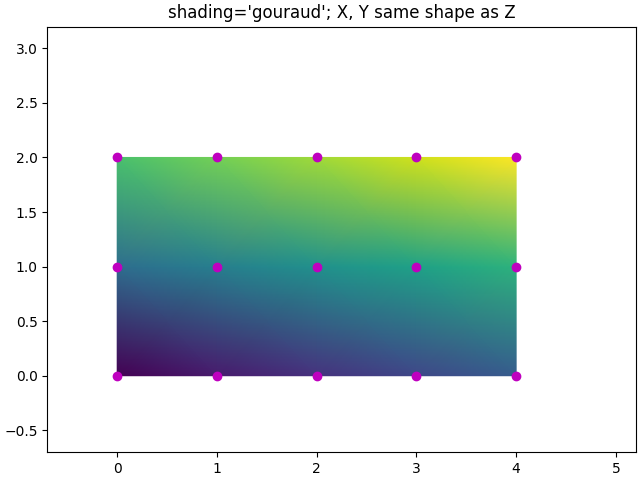Note
Click here to download the full example code
pcolormesh grids and shading#
axes.Axes.pcolormesh and pcolor have a few options for
how grids are laid out and the shading between the grid points.
Generally, if Z has shape (M, N) then the grid X and Y can be
specified with either shape (M+1, N+1) or (M, N), depending on the
argument for the shading keyword argument. Note that below we specify
vectors x as either length N or N+1 and y as length M or M+1, and
pcolormesh internally makes the mesh matrices X and Y from
the input vectors.
import matplotlib.pyplot as plt
import numpy as np
Flat Shading#
The grid specification with the least assumptions is shading='flat'
and if the grid is one larger than the data in each dimension, i.e. has shape
(M+1, N+1). In that case X and Y specify the corners of quadrilaterals
that are colored with the values in Z. Here we specify the edges of the
(3, 5) quadrilaterals with X and Y that are (4, 6).
nrows = 3
ncols = 5
Z = np.arange(nrows * ncols).reshape(nrows, ncols)
x = np.arange(ncols + 1)
y = np.arange(nrows + 1)
fig, ax = plt.subplots()
ax.pcolormesh(x, y, Z, shading='flat', vmin=Z.min(), vmax=Z.max())
def _annotate(ax, x, y, title):
# this all gets repeated below:
X, Y = np.meshgrid(x, y)
ax.plot(X.flat, Y.flat, 'o', color='m')
ax.set_xlim(-0.7, 5.2)
ax.set_ylim(-0.7, 3.2)
ax.set_title(title)
_annotate(ax, x, y, "shading='flat'")
Flat Shading, same shape grid#
Often, however, data is provided where X and Y match the shape of Z.
While this makes sense for other shading types, it is no longer permitted
when shading='flat' (and will raise a MatplotlibDeprecationWarning as of
Matplotlib v3.3). Historically, Matplotlib silently dropped the last row and
column of Z in this case, to match Matlab's behavior. If this behavior is
still desired, simply drop the last row and column manually:
Nearest Shading, same shape grid#
Usually, dropping a row and column of data is not what the user means when
they make X, Y and Z all the same shape. For this case, Matplotlib
allows shading='nearest' and centers the colored quadrilaterals on the
grid points.
If a grid that is not the correct shape is passed with shading='nearest'
an error is raised.
fig, ax = plt.subplots()
ax.pcolormesh(x, y, Z, shading='nearest', vmin=Z.min(), vmax=Z.max())
_annotate(ax, x, y, "shading='nearest'")
Auto Shading#
It's possible that the user would like the code to automatically choose which
to use, in this case shading='auto' will decide whether to use 'flat' or
'nearest' shading based on the shapes of X, Y and Z.
fig, axs = plt.subplots(2, 1, constrained_layout=True)
ax = axs[0]
x = np.arange(ncols)
y = np.arange(nrows)
ax.pcolormesh(x, y, Z, shading='auto', vmin=Z.min(), vmax=Z.max())
_annotate(ax, x, y, "shading='auto'; X, Y, Z: same shape (nearest)")
ax = axs[1]
x = np.arange(ncols + 1)
y = np.arange(nrows + 1)
ax.pcolormesh(x, y, Z, shading='auto', vmin=Z.min(), vmax=Z.max())
_annotate(ax, x, y, "shading='auto'; X, Y one larger than Z (flat)")
Gouraud Shading#
Gouraud shading can also be specified, where the color in the quadrilaterals is linearly interpolated between the grid points. The shapes of X, Y, Z must be the same.
References
The use of the following functions, methods, classes and modules is shown in this example:
Total running time of the script: ( 0 minutes 2.324 seconds)
